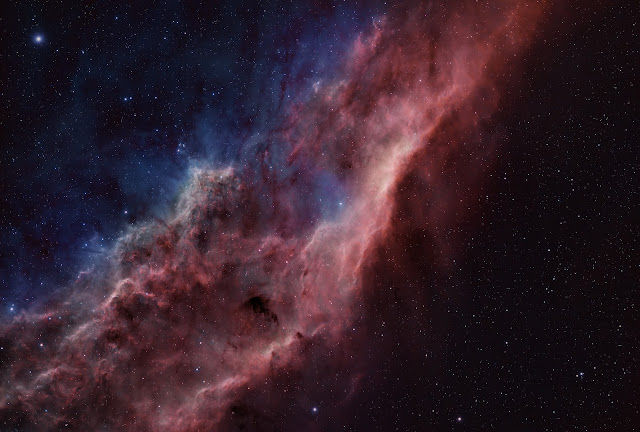The Great Orion Nebula has always been a firm favourite to view visually or to image. I was lucky enough to view the trapezium through the clubs 20 reflector. A beautiful sight in a quality eyepiece. I also had some fun imaging it too. Not a very favorably placed object for my backyard with the fence and a number of electricity cables stretching across from The South to the North East. So an imaging run consist of a lot of rejected frames with wires.
Friday 20 January 2023
M42 The Great Orion Nebula
Monday 16 January 2023
The Horsehead Nebula
Barnard 33, also known as the Horsehead Nebula, is a dark nebula in Orion’s constellation. The dark nebula, which forms the horsehead’s shape, is illuminated by the bright emission nebula IC 434.
The Horsehead was first discovered in 1888 by Scottish astronomer Williamina Fleming. It is one of their most recognizable objects and is 1,374 light-years away from us.
The horse head’s dark area is caused by thick dust blocking the stars’ light behind it. There are other interesting targets near the Horse Head like NGC 2024 (The Flame Nebula) and a blue reflection nebula NGC 2023. The Flame Nebula is below Alnitak, which is the first star on Orion’s Belt. At a magnitude of 1.77, it is the brightest star in this image.
The constellation of Orion has several large stellar nurseries. The Horsehead and Flame Nebula are part of the Orion Molecular Cloud Complex, a star-forming region.
The Flame Nebula has a cluster of several hundred newborn stars at its center. The Flame Nebula is a magnitude 10 and about 1350 light-years away.
Saturday 7 January 2023
Melotte 15
The full moon interferes with imaging the very faint objects so I have been reprocessing some data captured from early last year. These two images lie within the centre of the Heart Nebula. The first is Melotte-15 is the star cluster at the heart of the Heart Nebula. It is an association of very young hot blue supergiant stars that are only 1.5 million years old. Fierce stellar winds from this cluster have blown the enormous bubble within the parent nebula that is the heart nebula. Image 2. The winds have sculpted the dust clouds within which other stars are forming into interesting columns and shapes.


Monday 2 January 2023
Shiney bright thing
My scope is only 550mm focal length so not designed for lunar imaging. Also my camera is not a planetary camera imaging at just 6 frames a second. So no chance really of capturing good seeing. So the next 3 images are captured with the ASIAir pro. AVI processed in the software and the final jpegs are not huge in size.
Sunday 1 January 2023
The Tadpoles SHO processed
About 9 hours of data used to create the HSO version of the IC 410 nebula.
This was a project started lst year with just some Ha data.
California Nebula
NGC1499 The California Nebula. Discovered in 1889 The California Nebula is an emission nebula in the constellation of Perseus, currently v...

-
Object: M45Type: Open Cluster Distance: 380Light Years (Approx) Constellation: Taurus Date : 27th October 08 Equipment: William Optics M...
-
Without doubt the finest of globular clusters visible in the northern hemisphere. Located outside the plane of our galaxy and some 25,000 li...













